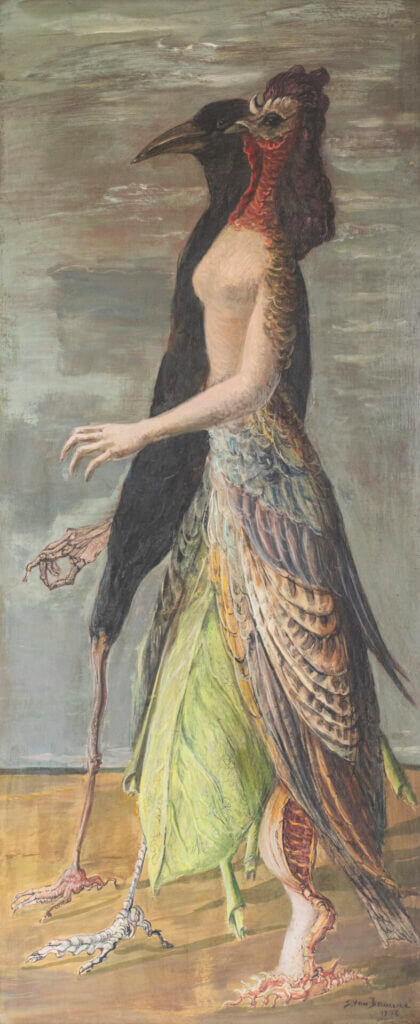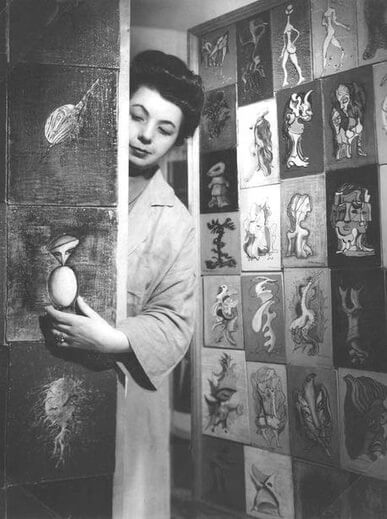Your currently viewing RAW Modern | Switch to RAW Contemporary
Couple d’oiseaux anthropomorphes, 1946
Catalogue essay by Blanche Llewellyn
Despite being born in Belgium, arguably the birthplace of Surrealism, Suzanne Van Damme only began creating identifiably surrealist artworks when she relocated to Paris in the 1930s.
By the late 1940s, the period to which this picture dates, she was at the height of her recognition. Just one year after painting these surreal figures, in 1947, André Breton, the so-called “Father of surrealism,” extended an invitation to Van Damme to participate in the renowned “Exposition Internationale du Surréalisme” at Galerie Maeght in Paris. This exhibition featured a prestigious lineup of famous contemporaries including Arp, Bellmer, Brauner, Calder, Duchamp, Ernst, Giacometti, Gorky, Lam, Matta, Miro, Picabia, Man Ray, Tanguy, Tanning, and numerous others.
These hybrid figures, blending human and animal characteristics, imbue the composition with an enigmatic and vividly surreal essence, blurring the lines between human, animal, and object. They symbolise the fluidity of form and identity, suggesting the potential for metamorphosis and transmutation. The composition and figures share similarities with Max Ernst’s “Attirement of the Bride” from 1940, reflecting the same type of llusionistic Surrealism and emphasis on hybrid anthropo-birds. This juxtaposition of pageantry and elegance with primitive elements creates in both paintings a striking contrast.
The first figure, with a female body and a turkey head, presents a juxtaposition of disparate elements that challenge conventional reality, intensifying the surrealist undertones of the subject. Its grotesque foot resembles a decomposing limb. Behind this figure stands a full-size humanized raven, likely evoking themes of death—underscored by the skeletal-like humanized hand of the animal.
An unsettling and nightmarish atmosphere is underlined by the many contrasts between the two figures, who, by merging together form one soul.
During this decade, Suzanne Van Damme’s remarkable works contributed to advocating for gender parity in the male-dominated realm of surrealist art. However, like many significant women painters of the movement, both during her lifetime and thereafter, the struggle for recognition continues.

